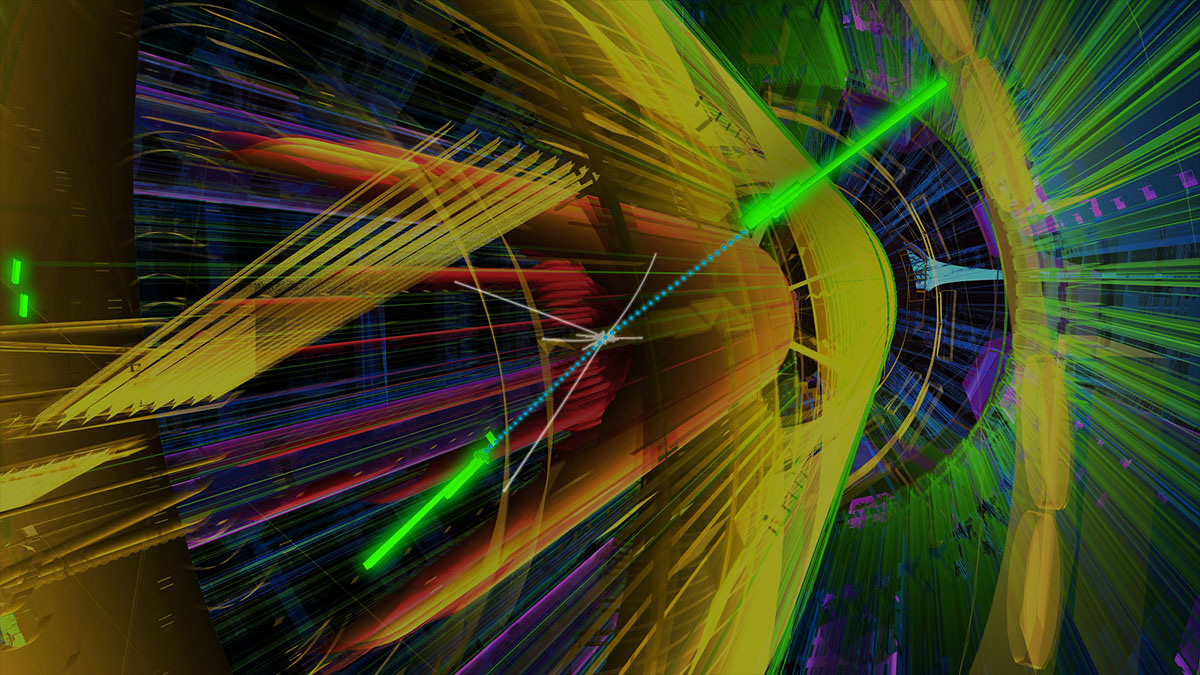why yes virginia, there is a higgs boson

Apologies for the long silence but it looks like life and work has been interfering with the blogging. Oh well, all yours truly can do is grin and bear it, and take a moment when he can to write a post. Luckily for me, there’s a really big event that makes for excellent post fodder; the apparent discovery of the Higgs boson, the linchpin of mass for all known matter in the universe. The short version of all the press releases boils down to a bump in particle decay data showing a very heavy particle fitting right in the predicted range of masses and lifespan for the long-sought Higgs, a bump which hasn’t just been detected at the LHC, but replicated by the Tevatron with a lesser but still significant degree of certainty, indicating that this time, we’re really on to something huge and really heavy. Yes, pun intended.
Of course not having a Higgs lurking in the data would make things exciting, but with it finally making a brief appearance means that the Standard Model of particle physics is as airtight as it could possibly be from a scientific standpoint and we can now proceed to study the boson in more depth.
So what can we find out when we study this boson? Well, by lucky coincidence, Just as we’re figuring out that our ides of how the universe works are along the right path, astrophysicists found a filament of dark matter shaping galaxy nodes and a thorough knowledge of the Higgs could provide us with clues about the ultimate makeup and fate of the cosmos. We may also study how the Higgs affects quantum particles to answer a few of our pressing questions about quantum mechanics. Practical applications like creating a relativistic rocket by canceling out the Higgs boson’s effects on matter with a finely calibrated device, allowing our spacecraft to cross the vast distances between stars within years rather than eons, are probably too far fetched at this point to consider seriously.
However, who knows what we could accomplish when we understand the origins of all mass? That’s the fun of science and technology. You never know what you can discover or create until you set your mind to it and try. The current confirmation of the Higgs shows us how far particle physics has come in a century; from barely being able to define atoms, it can now define and model entire particle zoos.
And which physics keeps studying the Higgs, I hope that the media will quickly forget the bosons’ unfortunate nickname since calling it The God Particle misrepresents Leon Lederman’s original intention to convey how hard it was to find the boson despite its perfect fit into every other experiment and equation, and by letting his publisher change his phrase “the goddamned particle” into a pseudo-religious euphemism he earned a lot of cold stares from his fellow scientists.
Yes, it is a critically important particle and yes, it has very profound effects on matter as we know it, but it has nothing to do with theology or a deity, and ultimately, all the particles defined by the Standard Model are important because they all play a role in the makeup of our universe. To go out of your way to pin the responsibility for making the cosmos as it is on a single particle and endow it with a highly misleading supernatural epithet just because it resonates with the faithful, it just plain wrong. We need to name it in a way that gives credit to Peter Higgs’ lifetime of work since it was his labor that made the LHC’s discovery possible and enabled us to keep extending the Standard Model to the dawn of the cosmos itself.





